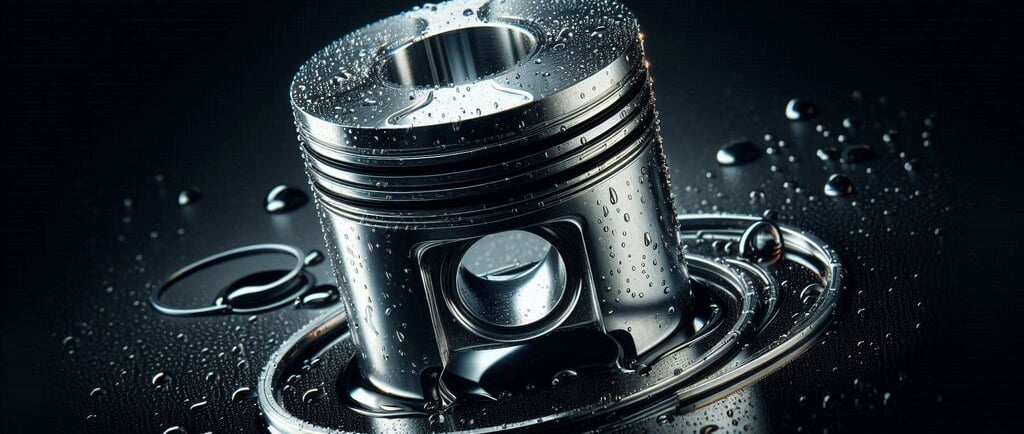Pistons and Piston Rings
When it comes to car engines, pistons and piston rings are the unsung heroes that keep everything running smoothly.
ENGINE COMPONENTS
11/13/20244 min read


Pistons and Piston Rings: Essential Components for Engine Performance
When it comes to car engines, pistons and piston rings are the unsung heroes that keep everything running smoothly. These small but mighty components endure extreme pressure and high temperatures, working tirelessly to ensure your engine operates efficiently. If you've ever wondered what pistons and piston rings do or how they affect your vehicle's performance, this article is for you! We'll break down their roles, types, common issues, and maintenance tips to help you better understand these essential engine parts.
What Are Pistons?
The Heart of the Engine's Movement
At the heart of every engine lies the piston, a cylindrical component that moves up and down within the engine’s cylinders. Connected to the crankshaft via the connecting rod, pistons are responsible for converting fuel combustion into mechanical energy. This process creates the motion needed to turn the wheels and keep your vehicle moving.
Key Functions of Pistons:
Power Generation: Pistons compress the air-fuel mixture before ignition, creating the explosion that powers the engine.
Energy Transfer: The motion of the piston moves the crankshaft, which, in turn, powers the vehicle’s wheels.
Efficiency and Performance: Properly functioning pistons help ensure optimal engine performance and fuel efficiency.
Made from durable materials like aluminum alloy, pistons are designed to withstand high temperatures and extreme pressures. However, even the toughest pistons can wear down over time, impacting the engine's efficiency.
What Are Piston Rings?
Essential Seals for the Combustion Process
Piston rings are small metal rings that fit snugly around the piston, providing a tight seal between the piston and the cylinder wall. These rings play a crucial role in maintaining the engine's compression and preventing oil from leaking into the combustion chamber.
Key Functions of Piston Rings:
Sealing the Combustion Chamber: Piston rings ensure that the combustion gases stay within the chamber, maximizing engine power.
Regulating Oil Consumption: Piston rings keep oil in the crankcase, preventing it from entering the combustion chamber.
Heat Dissipation: Piston rings transfer heat from the piston to the cylinder wall, helping to cool the piston during operation.
Piston rings come in different types, typically including compression rings and oil control rings. Together, they work to maintain engine efficiency, reduce emissions, and prolong engine life.
Types of Pistons and Piston Rings
Different Pistons for Different Purposes
Pistons vary based on the engine design and specific performance needs. Here are the common types of pistons:
Flat-Top Pistons: Standard in many engines, these pistons offer balanced performance and are fuel-efficient.
Domed Pistons: Designed for high-compression engines, these pistons enhance power by compressing the air-fuel mixture more tightly.
Dish Pistons: Ideal for turbocharged engines, dish pistons provide more space in the combustion chamber, reducing the risk of pre-ignition.
Types of Piston Rings
Each piston typically has three rings:
Compression Rings: Located at the top, these rings seal the combustion chamber, providing maximum compression.
Wiper Rings: Positioned in the middle, they help wipe excess oil off the cylinder wall to ensure smooth movement.
Oil Control Rings: Found at the bottom, these rings prevent oil from entering the combustion chamber and control oil consumption.
Common Issues with Pistons and Piston Rings
Symptoms of Worn-Out Pistons or Rings
Over time, pistons and piston rings can wear out, leading to issues that affect engine performance. Here are some common signs of piston or ring problems:
Excessive Smoke: If oil leaks into the combustion chamber, it can burn, creating excessive smoke from the exhaust.
Reduced Compression: Worn rings can lead to compression loss, which reduces engine power and fuel efficiency.
Increased Oil Consumption: Damaged piston rings allow oil to enter the combustion chamber, leading to higher oil consumption.
Causes of Piston and Ring Wear
The main causes of piston and ring wear include high mileage, improper maintenance, and low-quality engine oil. Poor driving habits, like frequent short trips, can also contribute to wear by not allowing the engine to reach optimal operating temperatures.
Maintenance Tips for Pistons and Piston Rings
Keep Your Engine Running Smoothly
Maintaining your pistons and piston rings doesn’t require much beyond basic engine care, but a few extra steps can help prolong their lifespan.
Use High-Quality Engine Oil: High-quality oil reduces friction and provides better protection for your pistons and rings.
Regular Oil Changes: Follow the recommended oil change intervals for your vehicle to keep your engine components well-lubricated.
Watch for Smoke: Keep an eye on your exhaust; unusual smoke could be an early sign of piston or ring wear.
Address Issues Promptly: If you notice signs of wear or damage, have a professional inspect and replace any worn components before they cause further engine issues.
When to Replace Pistons and Piston Rings
While pistons and piston rings are built to last, they may eventually need to be replaced. Signs like reduced compression, poor performance, or high oil consumption indicate that it may be time for new parts. Always consult with a professional mechanic for any significant engine repairs, as replacing pistons and rings requires specialized tools and expertise.
Conclusion: Small Parts, Big Impact
Pistons and piston rings are fundamental to your engine’s performance and efficiency. By ensuring proper maintenance, using quality oil, and addressing issues promptly, you can extend the life of these components and keep your engine running smoothly. Regular inspections and a little preventative care can go a long way in saving you from costly repairs down the road.



